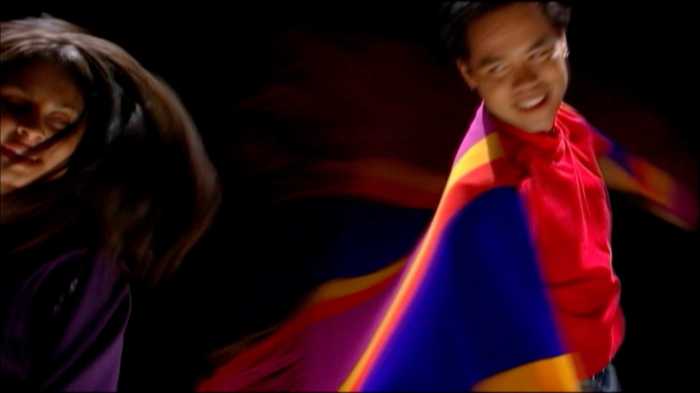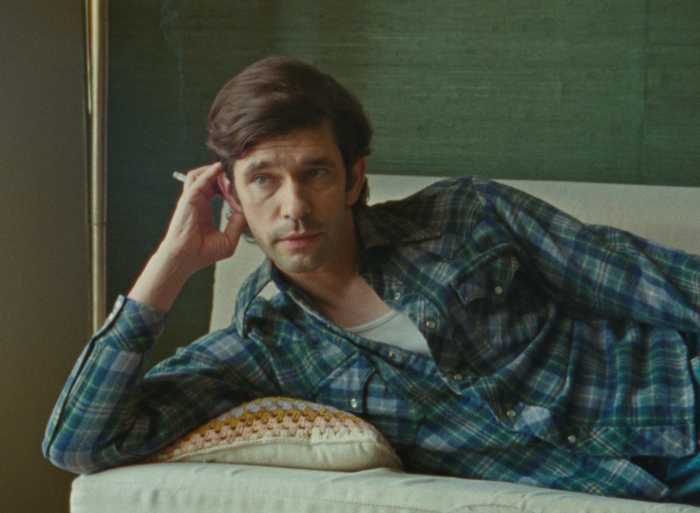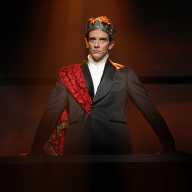The Swedish artist Hilma af Klint, who is considered the first Western abstract painter, was misunderstood in her lifetime. A feminist and a lesbian — she questioned women’s roles in society — she become deeply involved in spiritualism. She also hoped to establish a “Temple” for art and religion.
“Hilma,” a tasteful, respectful biopic, written and directed by Lasse Hallström, chronicles the artist’s personal and professional struggles from her teenage years to her death.
The drama, which is filmed in English, opens in 1944 Stockholm as Hilma (Lena Olin) reflects on her life while traveling on a streetcar. Flashing back to 1880, Hilma (Tora Hallström) is seen playing hide and seek with her younger sister, Hermina (Emmi Tjernström). Hilma is fascinated by science, from flowers in nature, to the depths of the sea her grandfather measured and mapped. She sees art as a means to research and understand the world.
After Hermina dies suddenly, Hilma becomes interested in spiritualism and communicating with the dead. She also enters art school. Her mother (Anna Björk) suggests Hilma find a husband, but the feisty Hilma insists she did not go to art school to get married. Her exasperated mother wishes Hilma would just once “do something girls would do.”
It is at art school — which is divided by gender — where Hilma meets Sigrid (Maeve Dermody), Mathilda (Lily Cole), Cornelia (Rebecca Calder), and most significantly, Anna (Catherine Chalk), who share her interest in spiritualism. They form a group, “The Five,” and use seances to communicate with the dead and use spirits to guide their art making.
Hilma quickly becomes close with Anna, and a moment of them sleepy-eyed and staring at each other on a ferry generates a sexual charge. A few scenes later, the women are seen kissing. “Hilma” depicts the romantic bond between Hilma and Anna quite chastely, though they repeatedly claim to be joined together, “like hook and eye.” But their relationship may be one based more on codependency as Anna is mostly seen supporting Hilma financially. (Hilma has a noble name but no money, and Anna comes from a wealthy family.) This arrangement includes Anna paying for dinner with Rudolf Steiner (Tom Wlaschicha), a noted Austrian philosopher Hilma declares is her soulmate, and hiring Thomasine (Jazzy De Lisser), a caregiver for Hilma’s ailing mother. Their relationship hits a snag when Anna becomes jealous of Thomasine, and scenes of the women fighting over money — a substitute for their love — feel more perfunctory than impassioned. Hilma’s lesbianism goes underexplored, which is disappointing.
More attention is paid to Hilma focusing her energy on her work in a hope to “find the truth” in the large abstract canvases that she paints with the help of “The Five.” Scenes of the women painting are entrancing — especially when Hallström employs animation to visually illustrate what Hilma “sees.”
Yet the painter is reluctant to show her work after she meets with Steiner, who is visiting Stockholm. He tells Hilma that “art must come from the soul of the artist,” and that painting according to spiritual instructors is not “creating.” Steiner’s remarks devastate her as she is desperate for his approval. Hilma goes into a funk, cancelling an upcoming exhibition, much to the chagrin of her fellow female artists. (Hilma suggests to Steiner that she is the sole painter. Anna witnesses this and casts a disapproving look, but curiously, not much is made of it).
Moreover, when Hilma sees an exhibit of Kandinsky’s non-figurative art, she feels doubly undervalued. When Hilma is later told her art must engage the heart, not the brain, that her work is too intellectual, she is both discouraged and disgusted.
“Hilma” recounts these episodes in the artist’s life in ways that engage the brain but not the heart. The film is handsomely made and certainly a fitting tribute to the artist, whose work is well presented throughout the film. But this sympathetic biopic fails to fully engage on an emotional level. Hallström never quite plumbs the depths of Hilma’s experiences, touching on them more casually.
An early scene has Hilma sketching a penis on a male model in a loincloth and being scolded by her art teacher even though she “drew reality.” Her pluckiness inspires the members of “The Five,” and one could also read this moment as pushing Hilma to paint abstracts. But “Hilma” lets this moment hang. Likewise, there are several scenes where Hilma eats, or doesn’t eat, suggesting she is too poor, too spiritual, or too busy for food. But she also has near fainting spells, which may be from hunger, or mental or emotional strain, or a spiritual connection. The ambiguity here can be frustrating.
As young Hilma, Tora Hallström is best when she has conflicts with Anna, Steiner, or others, because she displays some verve and energy. In contrast, Lena Olin plays older Hilma more passive and internal, which conveys how haunted she has become given the disappointments in her life. It is quite heartrending, and one wishes Olin had more screen time.
“Hilma” ends with a scene of the artist’s triumphant 2019 exhibition at the Guggenheim Museum to emphasize her delayed recognition and importance. This modest film also wants to celebrate Hilma af Klint’s achievement, but it does so with good intentions and mixed results.
“Hilma” | Directed by Lasse Hallström | Opening April 14 at the Quad Cinema | Distributed by Juno Films.





































